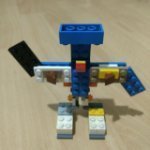
eselarm
-
Posts
292 -
Joined
-
Last visited
Reputation Activity
-
 eselarm got a reaction from 0jay in Injecting Renegade Firmware
eselarm got a reaction from 0jay in Injecting Renegade Firmware
In general it can be done what you want. You just need to understand how Arm SBCs boot/work and Linux in general. Simply stated, it is: ROM -> bootloader -> kernel -> userspace
ROM is very specific for the SoC of course, also bootloader is specific as well as the kernel. You can make a kernel that includes all various drivers and methods, like there is for x86 (works with Intel chips and AMD chips). userspace (rootfs) is normally generic, so if you take RPi bootloader+kernel and Libre userspace, it can work. I have done such things several times, but then the other way around: RPi userspace from my 5 years always in-place upgraded rootfs running on Rockchip RK3588 SBCs (Armbian bootloader and kernel). That way no lengthy and boring re-install of all sorts of debian packages and configs tuning etc. Even browser bookmarks are the same then. So very fast up and running with the new SBC. You need to know or start to study the differences in bootloader methods of course. In your case looking into the Libre script/tool would be a good start I think.
-
 eselarm got a reaction from BlackS in How to enter to u-boot enviroment ?
eselarm got a reaction from BlackS in How to enter to u-boot enviroment ?
I usually fight a bit the default 80x25 serial terminal sizing (KDE konsole) via 'screen /dev/ttyUSB0 1500000', but tools like MidnightCommander can be used. Certainly all standard CLI stuff and copy-paste. So just some commands:
apt list --installed linux-u-boot-rock-5b*
dpkg -L linux-u-boot-rock-5b-edge
cat /usr/lib/u-boot/platform_install.sh
cat /dev/mtdblock0 > /tmp/spidump
strings /tmp/spidump | grep -i U-Boot
-
 eselarm got a reaction from Horst in One orangepi has data corruption on power outage, other not
eselarm got a reaction from Horst in One orangepi has data corruption on power outage, other not
I don't know, but what you describe is that OP1 is essentially able to run from RAM (network I/O mainly) so not so much storage I/O which then lowers the change of corruption. For OP2, is quite heavy disk I/O it seems, also torrents writing is tricky for some filesystems.
If you want to know more why and how w.r.t. corruption, use Btrfs instead of Ext4. It still can be difficult if HW caches do the wrong thing, but you can make metadata duplicate and also play with commit time. I have a Pi3B running from SD-card and 4T 3.5i HDD via USB attached. It runs Debian Testing (Trixie now) , FAT bootfs and Btrfs rootfs with hourly snapper and also manual extra snapshots if I do upgrades. Also HDD is Btrfs formatted, 'dup' profile for metadata 'single' profile for data. I gets hard power cut every day at least once as solar powered. I do not do any UPS like noticing, also the power loss might be during a btrfs send|receive transfer, that will then fail, but in my script I delete read-write snapshots first as they should be read-only (so were correctly finished). No data loss or corruption during years. I just have a very simple guess about the amount of sunlight, which might be almost zero for days in winter.
On a Pi2B that seems to have damaged GPIO pin 4 and was using a bad brand SD-card, I could quite perfectly see when corruption started, which files you see when you do scrub. It was a logfile and some other file that were recently written, but unimportant, so I could still do a btrfs send of a snapshot of the rootfs to my local laptop new SD-card. I know how to create bootfs for Raspberries.
For my NanoPi-NEOs running Armbian I changed rootfs Ext4 into bootfs Ext4 + rootfs Btrfs. You can also use Armbian build to generate that off-the-shelf, I would now use FAT for bootfs as that matches how UEFI computers are organized. You also need extra write of U-Boot, that is not needed for RPi or UEFI.
An Ext4 filesystem can be turned into Btrfs in-place with tool btrfs-convert. If it is a rootfilesystem where the OS runs from, you still need to create an extra bootfs though and so also change fstab and also as a consequence the partition table and organisation.
-
 eselarm got a reaction from laibsch in Regression between kernels 6.12.20-current-sunxi and 6.12.30-current-sunxi
eselarm got a reaction from laibsch in Regression between kernels 6.12.20-current-sunxi and 6.12.30-current-sunxi
Maybe, but maybe the issue won't occur then. If you want it reproducable, first for yourself, make a complete image of that USB stick on other large storage device and use that as 'master problem disk'. I have an old PC with 3x 4T HDD Btrfs multidevice formatted for such cases. Btrfs can make reflink copies or do RW snapshots, so easy and fast to create a slightly modified image. There is gddrescue to make initial copy from USB-stick.
Also this is a USB-stick in an SBC, all sorts of power issues might also be a root cause.
You can use nbd-server and nbd-client to make large/huge images available via network, I do that for my BananaPi M1 (8T HDD).
In the past for Btrfs kernel development itself for example, there was/is? a metadata only imager tool, so in case of a complex filesystem bug, you can share only meta data, the data is actually zeroed/sparse.
But you need a good extra Linux computer, Windows exFAT handling makes little sense. Best to also test/use the image with a generic Debian Bookworm/Trixie computer, I use a Armbian virtual machine for such a case, running on RPi4 (if 32-bit) or ROCK5B (64-bit only). They can use NBD (as client). AFAIR you can use the sunxi kernel directly in a KVM, at least did something with a NanoPi-NEO image (same kernel as well).
-
 eselarm got a reaction from laibsch in Remote backup of SD card for an Orange Pi?
eselarm got a reaction from laibsch in Remote backup of SD card for an Orange Pi?
Most SBC backup tools I have seen are based on rsync and they operate then on/with Ext4 filesystem. Is fine when you don't have complex servers and databases running. I am not sure about pihole, but I saw that by default it keeps a 1 year history so a database file of about 1GB. I am not sure what happens to integrity of such a file on the target if during copy/rsync the source file also changes. AFAIK databases have their ways to handle it, when power-loss or so, but not sure.
If you want to be sure, use Btrfs as filesystem, then you can make atomic snapshots and use those for source of rsync or use: btrfs send -p <old snapshotnumber> <snapshot number>| ssh <remote_host> btrfs receive <backup folder>. That is the basic manual option. Complete tool is btrbk, it is standard in Debian repo, see https://digint.ch/btrbk/index.html docs of author. You still need some partition and bootloader handling I think. Or assume that a total crash is rare so only backup to NAS or so and reconstruct manually if you need a new SD-card or so or want to copy thing so eMMC of the OPi3.
-
 eselarm got a reaction from Werner in RPi5 Armbian_25.2.x upgrade: Unsupported initramfs version
eselarm got a reaction from Werner in RPi5 Armbian_25.2.x upgrade: Unsupported initramfs version
This reminds me of old issue on rpi forum, back to Debian10 times more or less when RPL did not support initramfs and I have been using Btrfs for RPis since Buster (or for sure Bullseye) timeframe.
I loop mounted Armbian rolling rpi4 trixie image and ran it via systemd-nspawn -b -D <mountpoint>
Then it turns out what I thought: the installed firmware package includes the script same as on Raspberry Pi OS from RPL themselves to copy/rename standard Debian kernel+modules install patch to the FAT boot partition.
root@localhost:~# apt list | grep raspi raspi-config/trixie,trixie,now 20221214-0ubuntu1 all [installed] raspi-firmware/trixie,trixie,now 1:1.20250430-1 all [installed] raspi-gpio/trixie 0.20231127 arm64 raspi-utils/trixie,trixie 20250314-1 all root@localhost:~# dpkg -L raspi-firmware | grep z50 /etc/initramfs/post-update.d/z50-raspi-firmware /etc/kernel/postinst.d/z50-raspi-firmware /etc/kernel/postrm.d/z50-raspi-firmware And it is this part of z50-raspi-firmware
flavour="$(echo "$initrd_version" | rev | cut -f1 -d- | rev)" case $flavour in v6|v7|v7l|v8|2712) ;; *) echo "ERROR: Unsupported initramfs version ($initrd_version)" exit 0 ;; esac On 1 of my RPi4 I had also the standard Debian kernel 'linux-image-arm64' besides the RPi kernel 'linux-image-rpi-v8' and grub-efi. So when the bootFAT parttition is tagged 0xEF00 (ESP) I could run the image/SD-card unmodified in virt-manager selecting the vanilla Debian kernel in GRUB.
I have thought a lot about what to do with those hook scripts in /etc/initramfs, also created various own ones, for Raspberry Pi OS and Raspbian and Armbian. The latter as it is U-Boot (on Rockchip/Allwinner) but just recently I put EDK2-UEFI v1.1 in SPI-flash and that makes all the efforts void as I now use default grub to load Armbian (and Opensuse) on RK3588. For RPi (3, 4, 5) this won't work unless some intermediate efi binary loader is used like is done in Opensuse, for Fedora maybe as well, I don't know. Still this won't work for RPi5 (yet) as its RP1 chip is a bottleneck for upstream support (complex PCI-E DeviceTree handling, see patches efforts done by Suse people AFAIR).
With introduction of Bookworm, the RPi firmware can load standard names for initramfs for all RPi HW variants back till 2012. But still no way to select a specific kernel adhoc at boot time via serial console for example (like extlinux.conf for U-Boot). The U-Boot v.s. RPI-firmwarebootloader feels a bit like UNIX pathnames v.s. MS-DOS pathnames, e.g. "/tmp" v.s. "C:\TEMP" or "Image" v.s. "kernel8.img" or "uInitrd" v.s. "initramfs8".
Maybe the option is to patch z50-raspi-firmware, maybe remove it from the .deb package. But also it is just a warning, so who cares one could think.
Other option is to use the vanilla Debian variant of raspi-firmware
root@localhost:/etc/apt/sources.list.d# apt list -a raspi-firmware raspi-firmware/trixie,trixie,now 1:1.20250430-1 all [installed] raspi-firmware/testing 1.20240424+ds-6 all That older version has other script implementation (very different), also uses upstream_kernel=1 in config.txt, which selects other firmware DTB names for Pi3.
Now writing this, I think 'vendor' could be downstream RPL based, so new firmware package and 'current' and 'edge' could be upstream mainline. But that also would mean almost no RPi5 functionality as long as that RP1 I/O chip functionality is not upstreamed. I don't know what status is, latest I know is that the wired ethernet still does not work, workaround is to use a RJ45 USB2 dongle on the USB-C connector.
-
 eselarm got a reaction from laibsch in Make SDcard image with sole purpose of eMMC receiving a fresh bootable Armbian image
eselarm got a reaction from laibsch in Make SDcard image with sole purpose of eMMC receiving a fresh bootable Armbian image
I know Ext4 and 1st boot resize is used, but I have manually recreated rootfs to be Btrfs. On NanoPi-R6C it is u-boot code in first 16M of SD or eMMC, then a 256M FAT32 partition with Image uInitrd DTB overlays. I made an extra script for update-iniitramfs to copy those for a certain kernel version to the FAT partition.
In a qemu VM, I use a custom enhanced u-boot that has Btrfs support, so no bootFAT needed anymore. This should also work on real HW,
The advantage of Btrfs for root is that you can move the rootfs from SD to eMMC (or NVME) I a live running system (btrfs replace start ...) At finish, only dd with u-boot loader to eMMC is needed. Then take out SD-card and done, no reboot needed, same rootfs UUID. Creating partition on eMMC is still needed of course, but can be just max of eMMC. Btrfs can always be shrunk later on in live system. So that is what I did several times also to install other OS variants in other partitions of the eMMC (and mostly NVME as that is much faster).
I haven't looked in armbiam-installer. I know when selecting Btrfs as rootfs in builder, you get Ext4 for boot and Btrfs for root. This is what I use on NanoPi-NEO and BananaPi-M1 (created manually long time ago). Those don't have eMMC or SPI-flash and it works fine. But tempting to write a Btrfs enabled u-boot to the proper place at the beginning of the SD-card and merge Ext4 /boot into rootfs.
I am a bit unsure about building 32-bit u-boot but i think i can temporary used systemd-nspawn of a 32-biit rootfs on RK3588 so fast building.
-
 eselarm got a reaction from dr_toggleswitch in How to change default window manager (GNOME -> IceWM) ?
eselarm got a reaction from dr_toggleswitch in How to change default window manager (GNOME -> IceWM) ?
This isn't something specific Armbian, so I even would say it is good that armbian contributors don't waste time on it to have it in armbian-config. You just type:
'How to change default window manager'
in your favorite search engine and then pick what is listed for Ubuntu or Debian.
-
 eselarm got a reaction from Werner in How to change default window manager (GNOME -> IceWM) ?
eselarm got a reaction from Werner in How to change default window manager (GNOME -> IceWM) ?
This isn't something specific Armbian, so I even would say it is good that armbian contributors don't waste time on it to have it in armbian-config. You just type:
'How to change default window manager'
in your favorite search engine and then pick what is listed for Ubuntu or Debian.
-
 eselarm got a reaction from Elton Sousa in Boot partition not showing on windows after burn images to sdcard
eselarm got a reaction from Elton Sousa in Boot partition not showing on windows after burn images to sdcard
Various (newer) Armbian OS images do not have a separate boot partition (anymore). So there is then only 1 partition where also the DTB files are and it is Ext4 formatted, which Windows cannot read. So you need a Linux computer to do DTB file copy.
You might encounter another problem, as usually a DTB file is paired with a matching kernel/version, but I do not know your files/version/images, also have no Amlogic box.
-
 eselarm got a reaction from Igor in Running self-build image on QEMU arm64
eselarm got a reaction from Igor in Running self-build image on QEMU arm64
A quick look at the shell code makes me think that it is a different purpose compared to how I use virtualization. I use only HW accelerated based virtualization, so -enable-kvm flag is missing, but might be added by virt-install. Also mostly Arm on Arm although I also use x86 on x86 as well. I do not use qcow2, but just flat images or a physical SD-card or NBD or LVM.
Before I got my Rock3A, I downloaded the Armbian Noble image for it (was 6.6.62) but put a 6.12 *rk3588 kernel on it as well. With the default Armbian U-Boot for QEMU I could then prepare everything and already 'run' my Rock3A as a VM on NanoPi-R6C like this:
taskset --cpu-list 0-3 qemu-system-aarch64 \ -M virt -cpu host -enable-kvm -m 2048 -smp 4 \ -bios u-boot.bin \ -drive if=none,file=rock3a.img,format=raw,id=hd0 \ -device virtio-blk-device,drive=hd0 \ -netdev bridge,id=hn1 -device virtio-net,netdev=hn1,mac=xx:xx:xx:xx:xx:xx \ -nographic The taskset is needed if host runs 6.1.x vendor kernel and also makes it more realistic w.r.t. speed as then the VM gets 4x Cortex-A55, same as real Rock3A.
The 6.12/rk3588 kernel (inside the VM) was needed as that one has all included w.r.t. machine virt (same as vanilla Debian Bookworm kernel).
A note is that I later on added Btrfs support to a custom build u-boot for QEMU and converted Ext4 in rock3a.img into Btrfs, but principle is the same. Btrfs offers online shrink and differential snapshots that I use for remote backups. And with a MAC-address equal to the real Rock3A, it is easy flipping between real and VM.
Also note is that the following file needs to be created on the host, assuming it uses br0 as base for network I/O:
# cat /etc/qemu/bridge.conf allow br0
To use full graphics in VM and for multi-year running VM on my RPi4B, I also use virsh and UEFI. But usually only CLI is needed.
-
 eselarm reacted to MaxT in Using the Armbian Build Environment
eselarm reacted to MaxT in Using the Armbian Build Environment
It does work. The issue I referred to relates to the rsync bug. Seems solution is to update rsync and update for 22.04 was just released: https://bugs.launchpad.net/bugs/2095004 -
 eselarm got a reaction from Meestor_X in SPI on rock s0
eselarm got a reaction from Meestor_X in SPI on rock s0
The SoC has an ADC AFAIR, but it is used for 'Recovery Key' AFAIR. Look in Radxa PCB schematics to be sure.
-
 eselarm got a reaction from Meestor_X in Overlays do not apply even when selected in armbian-config and then rebooting
eselarm got a reaction from Meestor_X in Overlays do not apply even when selected in armbian-config and then rebooting
You might have the situation that your Pi sees/has 2x U-Boot, 2x boot.scr
Or even more. boot.scr is generated from boot.cmd, look in there how scripting composes the name of your overlay files.
Multiple copies and/or versions will create mystery. Take your time and see what is what and where. And connect serial console. It allows you to load dtbo manually, needs a lot of U-boot commands study, I also had to learn myself.
-
 eselarm got a reaction from Erik Middeldorp in Tinker Board still draws power after shutdown
eselarm got a reaction from Erik Middeldorp in Tinker Board still draws power after shutdown
I see it is from 2021. So a typical case where the board vendor has left its customer. Still Debian10 where in half a year we will have Debian13 already. I also see there is an older version Debian9. So ASUS sold the boards, supplied it with some OS image, did 1 time an update, but that's it. It looks to me that they never made any profit from this SingleBoardComputers business, so not surprising that support ended, that is the hard truth. It is a pity as I remember when it was put on the market, I found it a promising alternative to RaspberryPi and I have several ASUS PC motherboards that already work for 10+ years. But of course people still pay Microsoft.
This is more or less the base for expectation level what you can do with the board. You can make some mix of the old ASUS Debian10 image and a newly build more generic Armbian image, but that requires quite some Linux know-how and low-level tools to do. Otherwise, pull the powerplug after shutdown.
-
 eselarm got a reaction from badhon_raj in Help me recover corrupted OS
eselarm got a reaction from badhon_raj in Help me recover corrupted OS
e2fsck checks only the metadata, it cannot know if data inside your files is corrupted or not. So I would use the old backup and think hard about what files could be needed and are newer from the corrupted image. Can be timeconsuming.
It might be that the SD-card was in some blocked state doing wearleveling or whatever, so maybe the image you made later is maybe correct. You could try to write it back and see if it boots.
But to prevent such issues, use Btrfs as rootfs. It has checksums for all data blocks and would have listed you in this case where which files the corruption is. It also also allows you fast incremental online backups, so every hour or so, what you want. And because Copy on Write, no problems with sudden powerloss, assuming it is not a bad or half-dead SD-card.
-
 eselarm got a reaction from Евгений Загребельный in Banana Pi BPI-M2-Ultra with armbian stops load after "Scanning for Btrfs filesystems"
eselarm got a reaction from Евгений Загребельный in Banana Pi BPI-M2-Ultra with armbian stops load after "Scanning for Btrfs filesystems"
I am almost sure now that the reason I saw: 'Running /scripts/local-premount ... Scanning for Btrfs filesystems' is power supply or circuitry related.
What exactly is a question still. If I want to know, I have to go back to the situation on the day before yesterday when I tried to boot the new ROCK3A v1.31 with the original downloaded noble 6.2.62 based images.
Radxa wiki mentions 5V/2A is needed, so I took a known-to-work PSU (used for diskless RPi4B) rated 5V/2.4A, added my https://www.fnirsi.com/products/fnb48s and with HDMI, serial console, RJ45 connected as well.
The FNB48S displayed values well below 5V/2A. What worries me is that several strange things happened:
- with 2 different brand SD-cards, the board went in a low-power state, stalled. Disconnect and then reconnect USB-c power cable made it boot further mostly, until 1 time full success
- the HDMI monitor sometimes shows a shaky flash. That is the most strange; I suspect a loop in cabling somehow, but it isn't there (in theory). The workaround is to make sure no loops, so no HDMI, serial console connected laptop on batteries
- around kernel/systemd messaging about NPU power also something changed, either stall or success.
In the end, as stated already, Radxa Debian11 CLI image worked. But also the Armbian Bookworm minimal IoT image with kernel 6.6.62. So I used the latter one to set up some basic things like ssh access and keys and correct MAC/IP address (networkd fails somehow with DNS in my homelan, so purged netplan and (re-)installed NM). And the converted the whole rootfs of-line to Btrfs with btrfs-convert, put SD-card back in and it still worked.
Yesterday, the day after, I swapped the 5V/2.4A+FNB48S for just a new RaspberryPi 5V/5A PSU (not that the 5A matters) but was new/unused and also got 2 the other already setup noble rootfs systems onto extra partitions on the same SD-card. No issues, although now it is kernel 6.6.63 or 6.6.64 already as I put it on the beta repo.
My use-case was replacing an old dead Intel Asrock server board handling a large SATA HDD, so I needed the 6.1.84 vendor kernel which now includes a SATA overlay and that works (kernel sees it at least).
So my guess is I have/had some (GND)loop or whatever. I always can run the whole setup via an off-grid standalone 12V car-battery, in case I want some 'proof'. it was late in the evening, too tired as well I guess.
-
 eselarm got a reaction from Евгений Загребельный in Banana Pi BPI-M2-Ultra with armbian stops load after "Scanning for Btrfs filesystems"
eselarm got a reaction from Евгений Загребельный in Banana Pi BPI-M2-Ultra with armbian stops load after "Scanning for Btrfs filesystems"
There is an issue with SD-card interfacing in the 'noble_current_6.6.62' images I think. I see the same:
Begin: Running /scripts/local-premount ... Scanning for Btrfs filesystems
and is is because after the kernel is loaded and starting to run (doing scripts from initramfs etc), the SD-card/MMC interfacing get flaky or so. That endless wait is just that initrd can't find the rootfs. It also happened in an earlier phase that communication with the SD-card gets into trouble. Then many block I/O errors. It seems on older slower card 1 out of 4 powercycles it works, and then also no problem at all. The successful run I managed to setup the full system KDE neon desktop. But now it always fails, so I took a complete image of the SD-card and will try later.
In my case it is a ROCK3A so different SoC. A Radxa Debian11 CLI image gives no problems. I will make an own topic later when I know more.
-
 eselarm got a reaction from Werner in NanoPi NEO hangs on boot Bookworm 23.5.1
eselarm got a reaction from Werner in NanoPi NEO hangs on boot Bookworm 23.5.1
Another try: 'Armbian_23.5.0-trunk.275_Nanopineo_bookworm_edge_6.2.16_minimal.img' works!
So filesystem resize, account creation, reboot, power cycle. U-Boot reports: 2022.04-armbian (May 25 2023 - 19:26:34 +0000) Allwinner Technology









